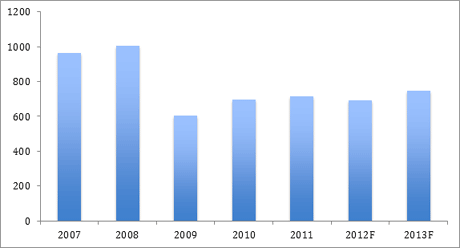Why Marks & Spencer is still worth buying
Marks & Spencer's disappointing sales figures are a reminder of how tough life is for high street retailers. But that doesn't mean its shares aren't worth buying, says Phil Oakley.
Most of us know that the high street is a tough place to be in business; M&S confirmed as much this morning.
In the last three months, its UK sales increased by only 0.8%. Take away the effect of new selling space, and they fell by 0.7%. Compared with lots of its high street peers this isn't a bad performance, but it does highlight how difficult it is for M&S to grow its business.
City analysts and press pundits will no doubt go on about how M&S didn't buy enough knitwear products in February and lost sales. But this isn't really the issue. The key question is: do you think that M&S can deliver sustainable growth in profits?
MoneyWeek
Subscribe to MoneyWeek today and get your first six magazine issues absolutely FREE

Sign up to Money Morning
Don't miss the latest investment and personal finances news, market analysis, plus money-saving tips with our free twice-daily newsletter
Don't miss the latest investment and personal finances news, market analysis, plus money-saving tips with our free twice-daily newsletter
We have our doubts. The core customer base of M&S is typically more affluent than most of the UK population, but there are probably not enough of them to turn the company into a growth story.
So should investors sell out?
My colleague David Stevenson tipped M&S as a buy back inJanuary.But is it now time to sell?
Wewouldn't necessarily say that. Let's take a closer look at the company's various units.
M&S's food business is arguably a cut above those of its rivals in terms of quality. Even in a weak UK economy, there are still plenty of people who are prepared to pay M&S's premium prices.
But can this business really grow strongly? We don't think so. M&S isn't going to become the place where lots of people do their weekly grocery shop. Its key strength is in specific, high-quality food for special occasions. So it'll be resilient, but not spectacular.
General merchandise is a tougher business. The fact that M&S didn't order enough knitwear in February is a classic example of how difficult it is to get this business right all the time.
Fashion particularly womenswear is very competitive and fickle, so it's impossible as an investor to know whether the company will get it right year after year. If history is anything to go by then it will not, and profits will move up and down a lot. General merchandise is also more discretionary; when times are tough, big-ticket purchases can be postponed.
M&S's online business is doing well. Sales were up 22% during the last three months compared with market growth of 14%. This is good news given the growing trend of online shopping, but would most of these sales have once been made in stores anyway? If so, then online sales are more of a way of defending rather than growing the business.
That just leaves the international division. This business is very profitable, with higher margins than the UK business. M&S seems to have been quite smart in choosing its business model in certain markets.
For example, in stronger markets such as China it owns its stores, whilst in other markets it goes for a franchise model, taking income in the form of a royalty fee.
Focusing on China (mainly Shanghai and Hong Kong), India and the Arabian Gulf states looks to be a good strategy given the growth of middle class consumers. But will it be enough to offset the sluggish UK business?
M&S Pre-tax profits (£ million)

City analysts don't seem to think so. They currently expect a very modest upturn in profits, despite significant investment by M&S. Profits are still expected to be a long way short of peak levels achieved in 2008.
That all sounds pretty gloomy, not to mention a little dull. However, the good news is that the M&S share price already reflects the company's challenging outlook. Trading on 9.9 times March 2013 forecast profits, the shares are not expensive.
On top of that, its balance sheet is strong, while the fact that it owns rather than rents a large proportion of its own stores means that it can comfortably meet its fixed charges (interest and rents).
The 5% dividend yield is covered twice by profits and looks quite secure. A lack of growth means that the share price is unlikely to go up much, but the shares look a decent buy for income.
Get the latest financial news, insights and expert analysis from our award-winning MoneyWeek team, to help you understand what really matters when it comes to your finances.
Phil spent 13 years as an investment analyst for both stockbroking and fund management companies.
After graduating with a MSc in International Banking, Economics & Finance from Liverpool Business School in 1996, Phil went to work for BWD Rensburg, a Liverpool based investment manager. In 2001, he joined ABN AMRO as a transport analyst. After a brief spell as a food retail analyst, he spent five years with ABN's very successful UK Smaller Companies team where he covered engineering, transport and support services stocks.
In 2007, Phil joined Halbis Capital Management as a European equities analyst. He began writing for MoneyWeek in 2010.
-
 The shape of yields to come
The shape of yields to comeCentral banks are likely to buy up short-term bonds to keep debt costs down for governments
-
 The sad decline of investment clubs – and what comes next
The sad decline of investment clubs – and what comes nextOpinion Financial regulation and rising costs are killing off investment clubs that once used to be an enjoyable hobby, says David Prosser